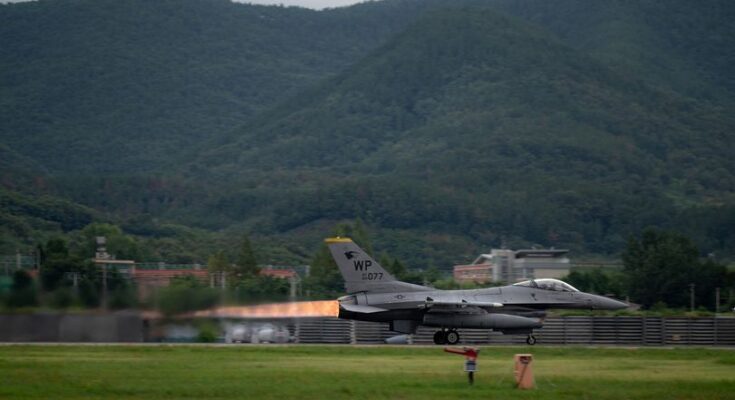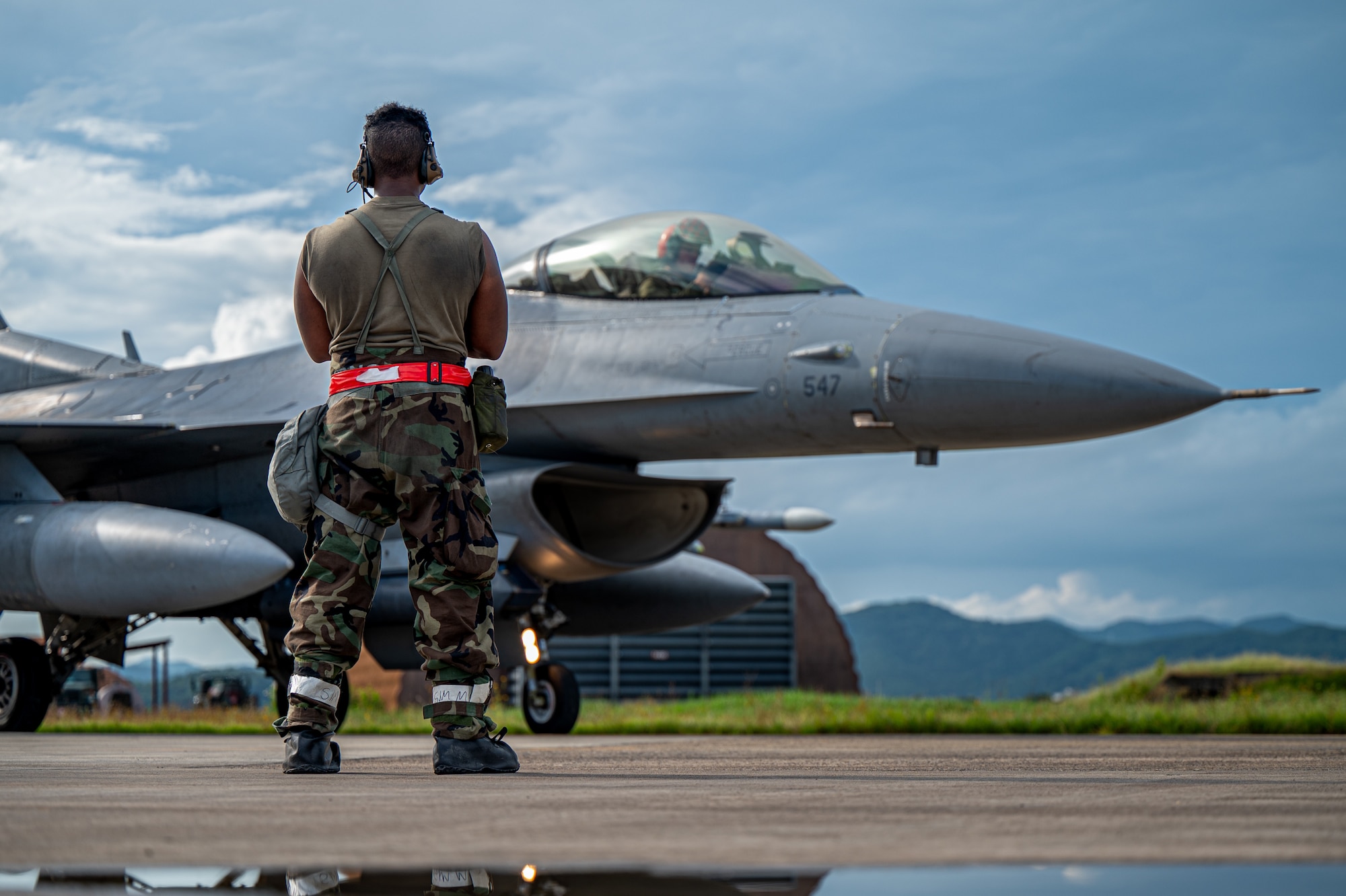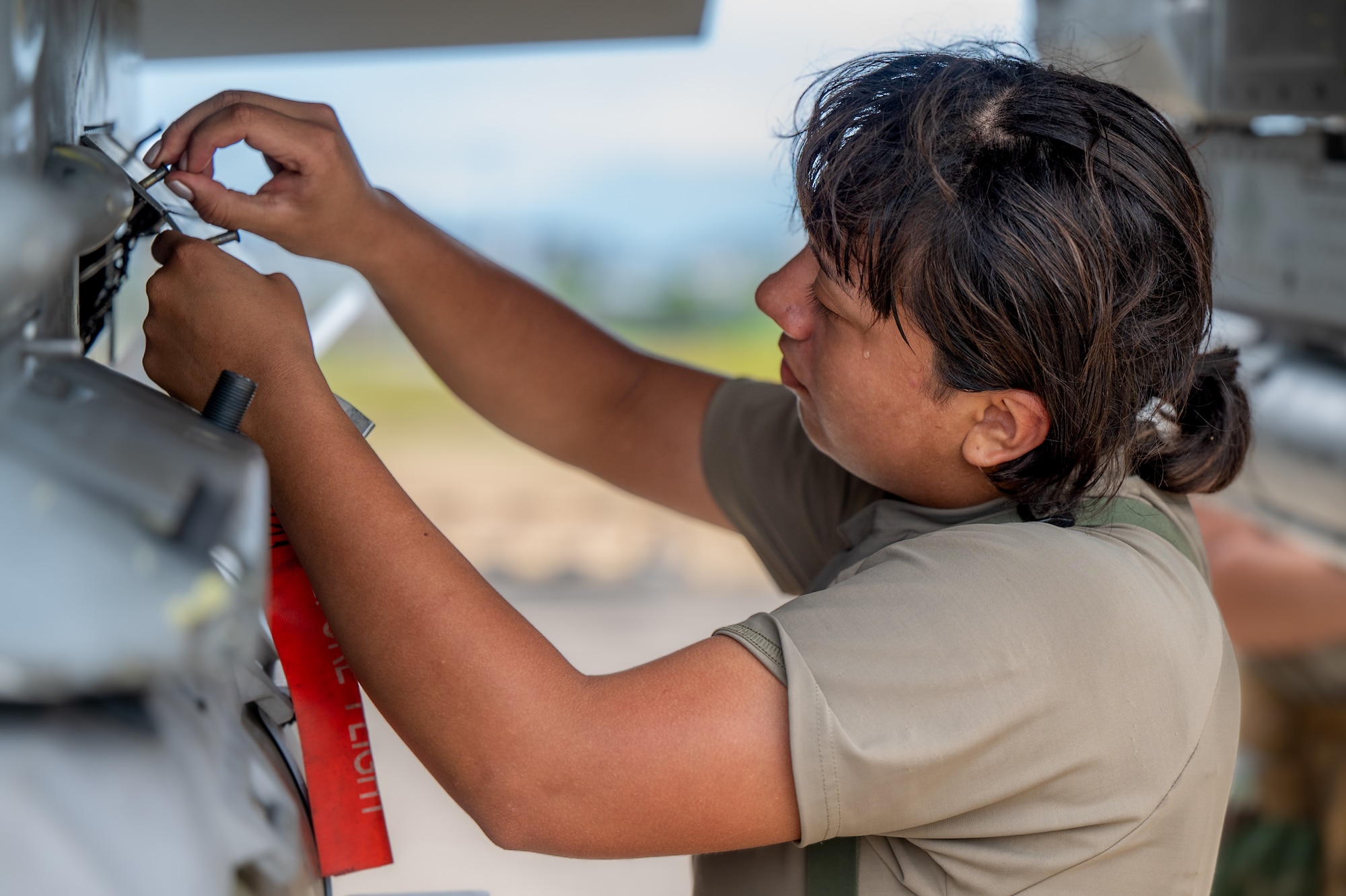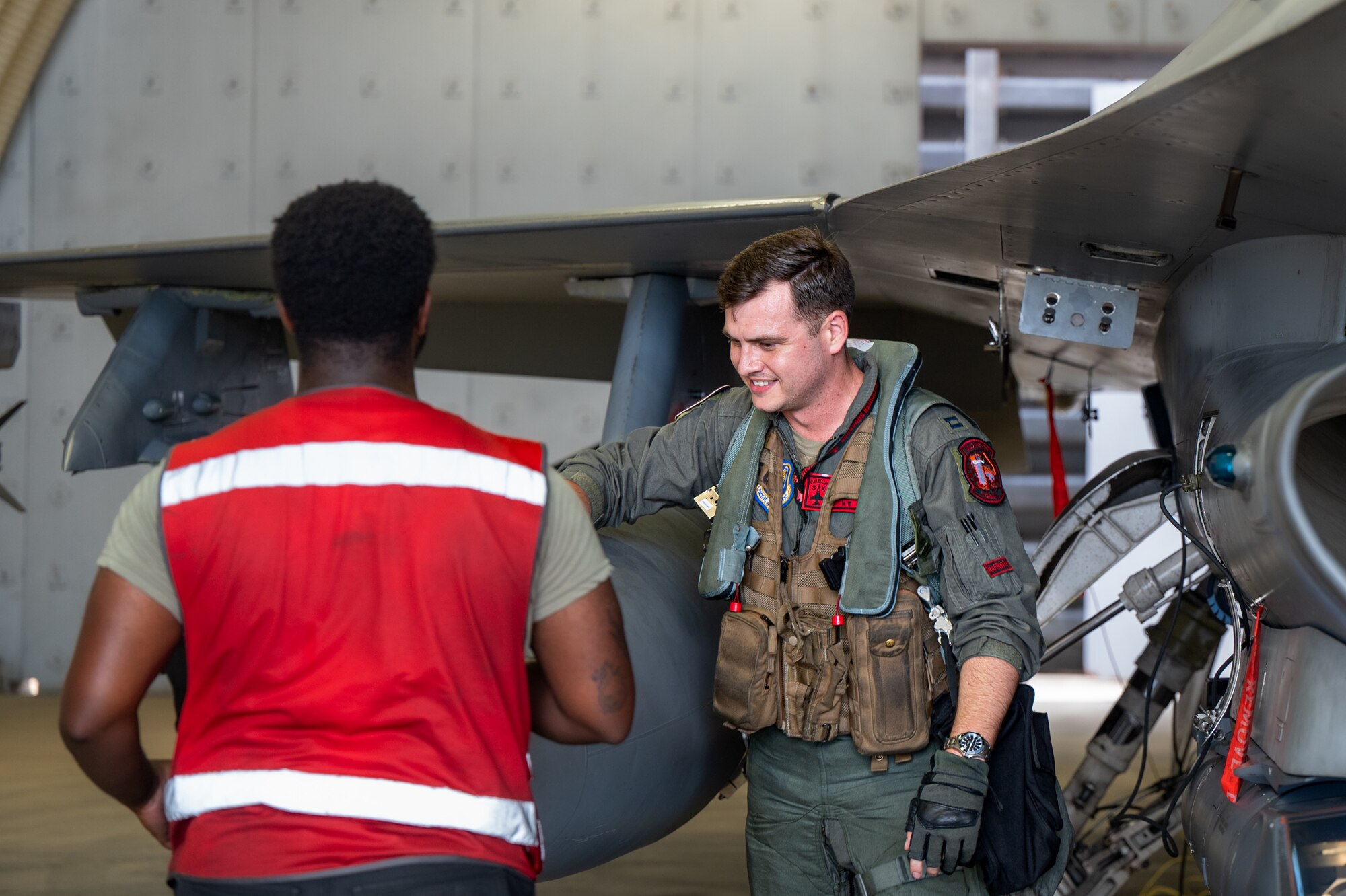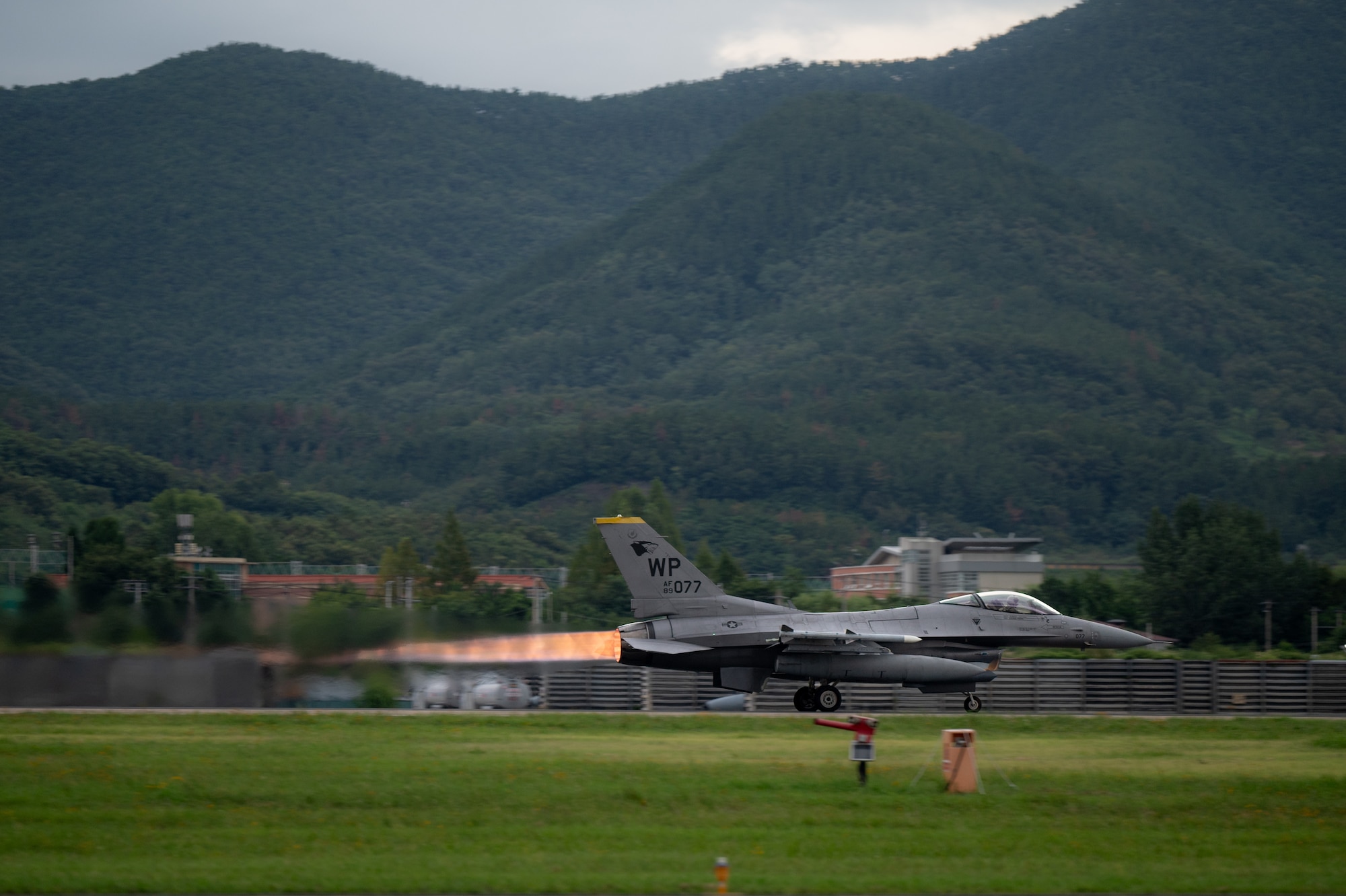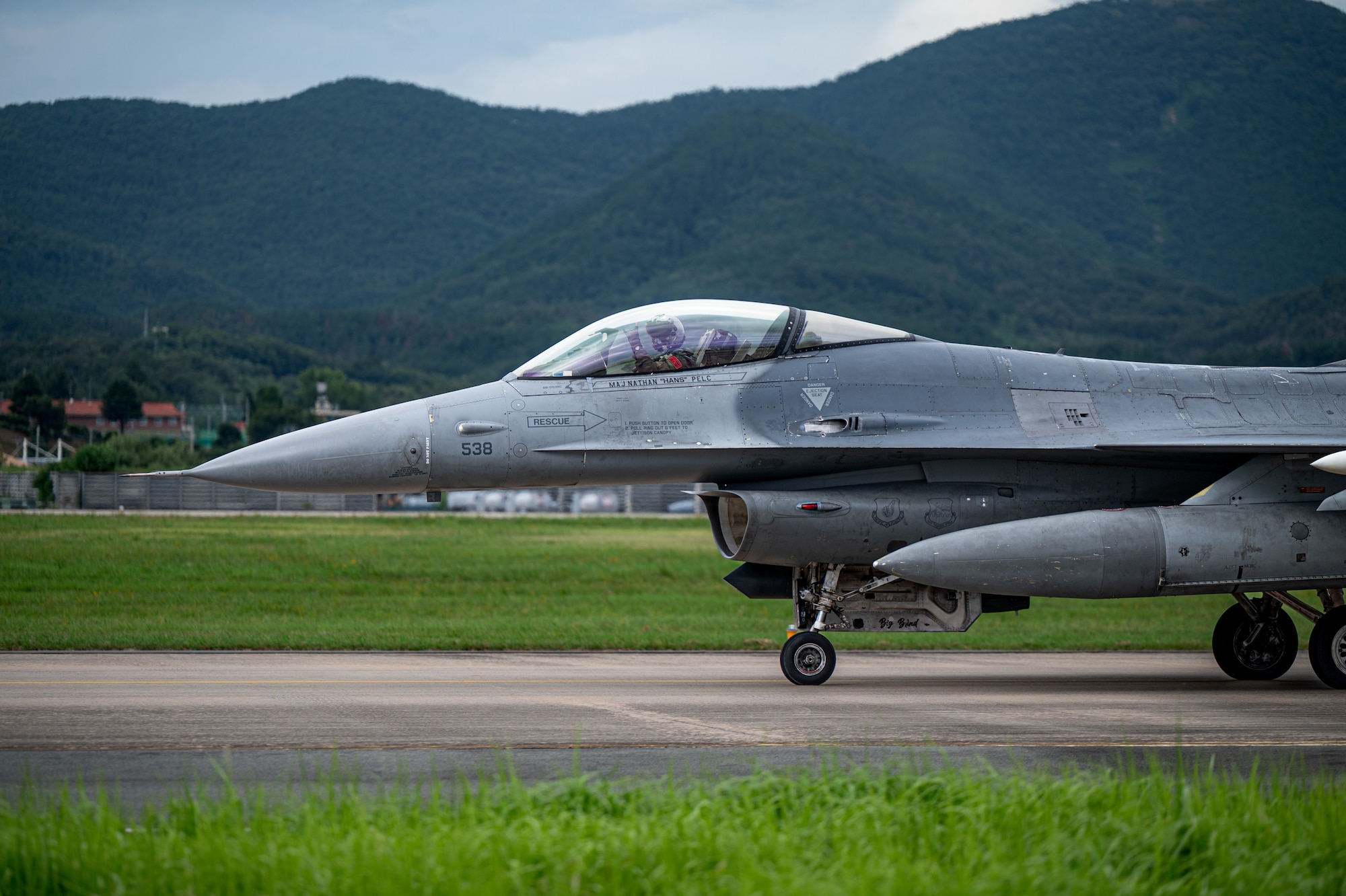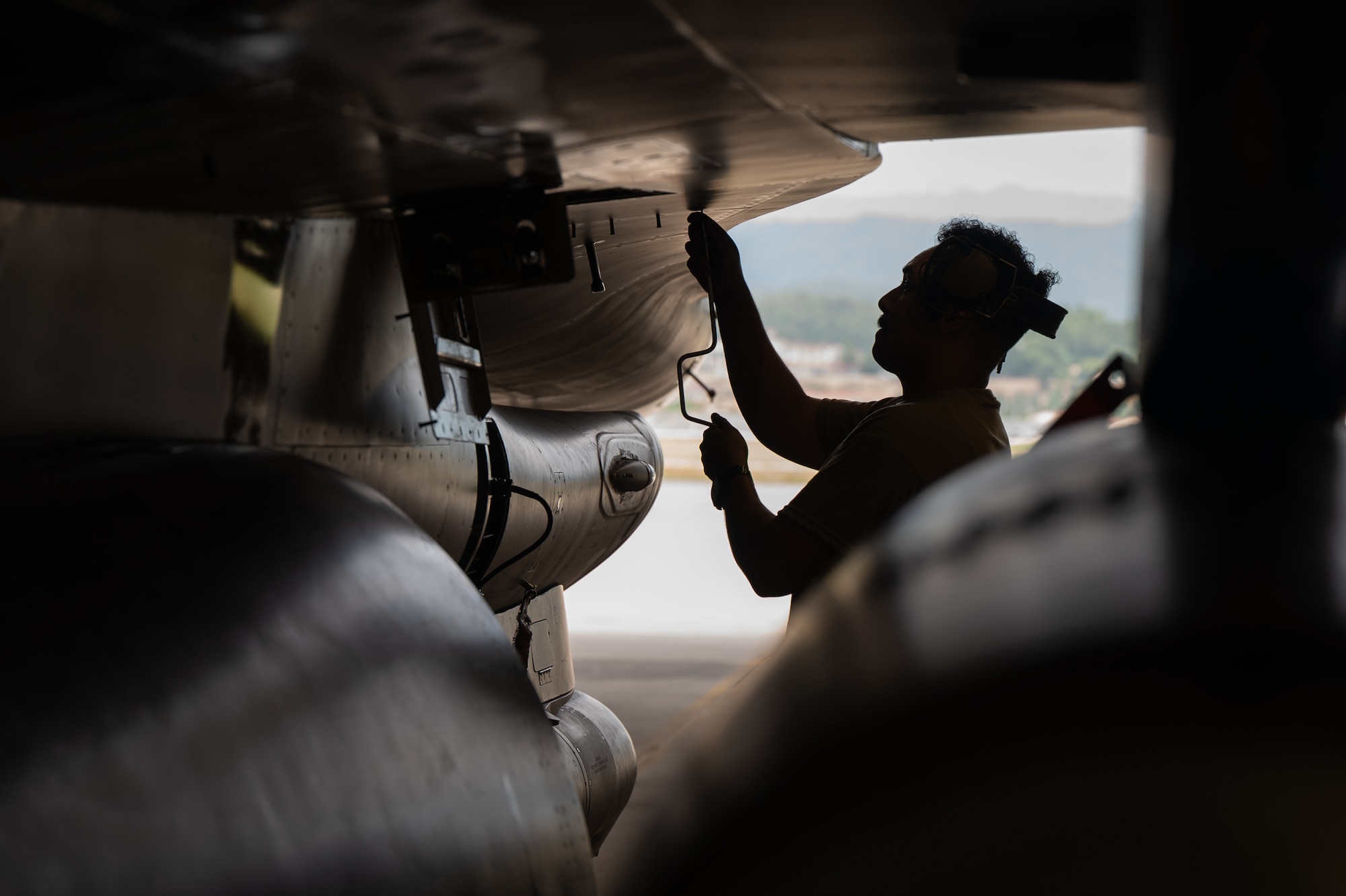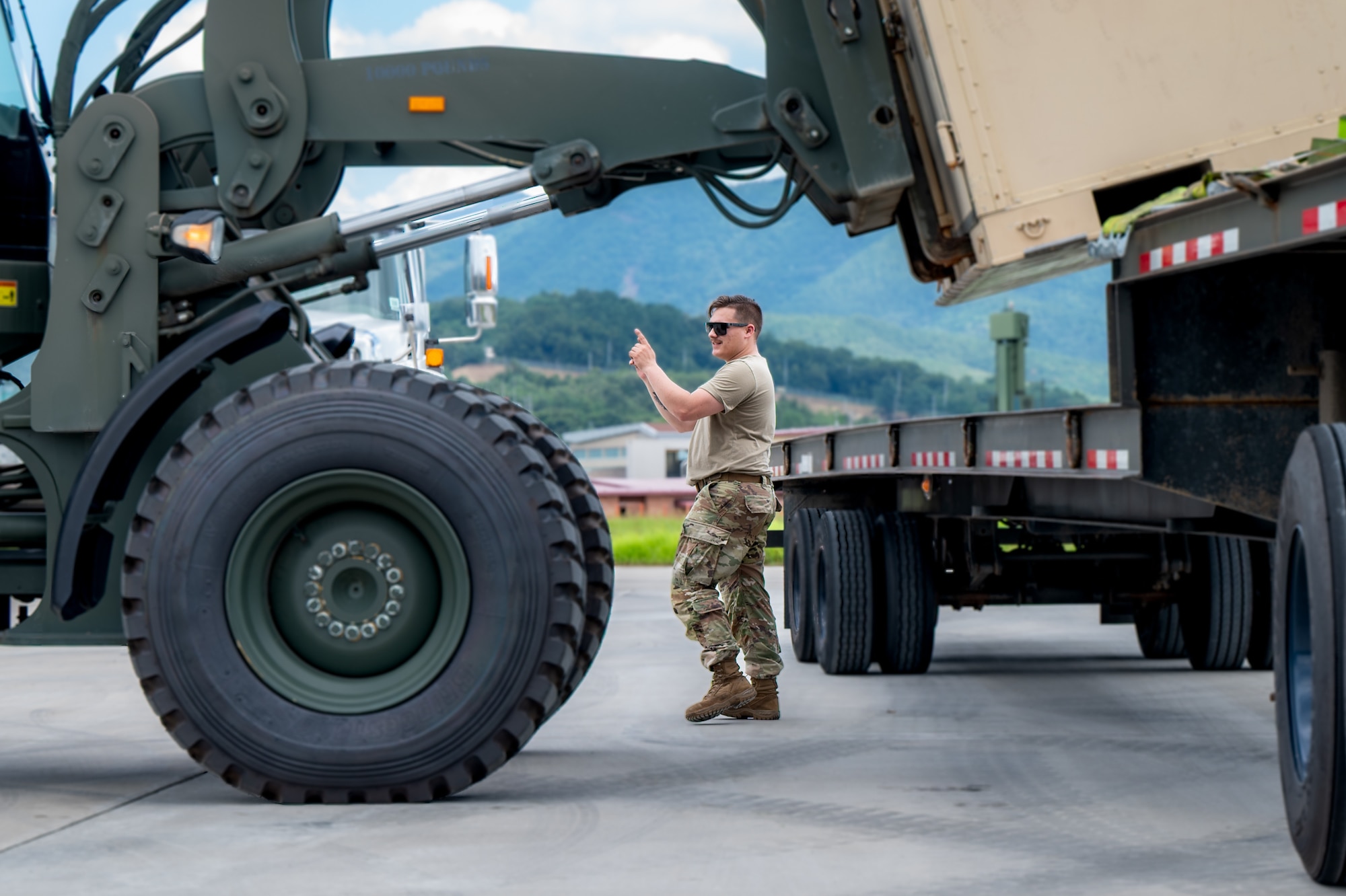During the defense-oriented exercise, both wings rapidly mobilized to an unspecified location in the ROK, sending equipment, personnel and aircraft to test their abilities to generate airpower and conduct flying operations with limited resources in an unfamiliar environment.
“Executing ACE operations during UFS allows us to deploy small, flexible teams anytime, anywhere, while maintaining a minimal footprint,” said U.S. Air Force Master Sgt. Jeeno Justiniano, 51st FW inspector general. “It enables us to execute a wide range of tasks at any location, from assembling munitions to launching aircraft.”
ACE is a strategy that enhances flexibility and resilience of forces, providing the ability to swiftly respond to any conflicts from any location, while also presenting layers of operational unpredictability to an adversary’s decision making. Both wings, as part of Seventh AF, worked together to deliver tactical, live flying in support of the numbered AF’s command-and-control training efforts during UFS24.
“Exercising ACE as a live-fly event from a dispersed location allowed our personnel to test and refine the communications and logistical requirements from the headquarters down to the tactical units,” said Maj. Zachary Johnson, Seventh Air Force deputy chief of plans. “This enables us to further refine the educational requirements of our multi-capable airmen, and will inform how units are organized, trained, and equipped.”
This exercise also follows the joint-efforts of the Seventh AF’s “Super-Squadron” initiative, where the 8th FW temporarily reassigned aircraft to the 51st FW as part of a combat optimization test. This specific exercise movement was one of the first tactical movements of the joint Super Squadron initiative.
“The Super Squadron is more than just a merge of Fighter Generation Squadrons,” said Maj. Alex Carmona, 8th FW ACE Cell Lead. “Through application of tactics, techniques and procedures, we’re structured to support and sustain scalable ACE operations.”
“This training gives us military flexibility and better enables our forces to deter aggression, defend the Republic of Korea, and, if required, defeat any attack against the Alliance,” said Johnson.
The implementation of ACE during UFS24 is vital for maintaining a robust defense posture on the peninsula, showcasing the Seventh AF’s ability to rapidly respond to emerging threats under various conditions. The 51st FW’s participation not only highlights its adaptability but also reinforces the strength of the U.S.-ROK alliance through the joint planning and execution of dispersed operations throughout the Korean Peninsula and the Indo-Pacific theater.
“We train alongside our ROKAF and fellow USAF counterparts to ensure we’re fully synchronized and ready to respond together,” said U.S. Air Force Capt. Bryan Meek, 36th Fighter Squadron alpha flight commander. “UFS provides us with a wartime operational tempo so that when the time comes, we’re ready to ‘Fight Tonight’ with our allies, just as we’ve practiced.”
